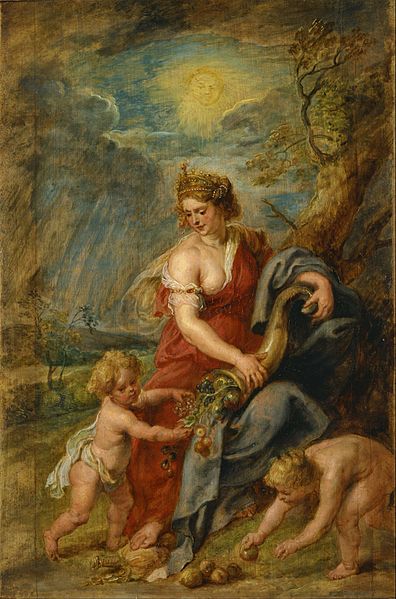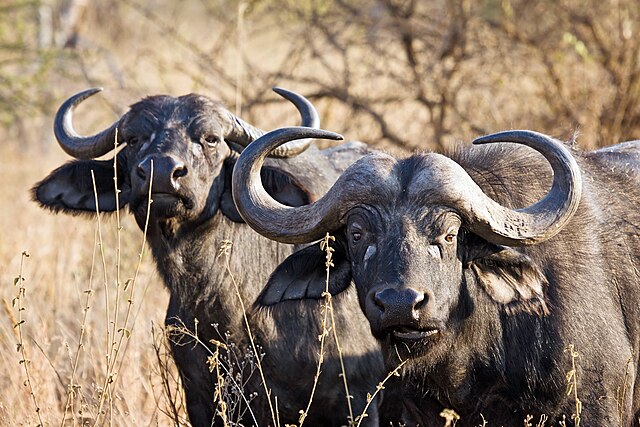In classical antiquity, the cornucopia, from Latin cornu (horn) and copia (abundance), also called the horn of plenty, was a symbol of abundance and nourishment, commonly a large horn-shaped container overflowing with produce, flowers, or nuts.
Allegorical depiction of the Roman goddess Abundantia with a cornucopia, by Rubens (ca. 1630)
Allegory of Fortune (1658) by Salvator Rosa, representing Fortuna, the Goddess of luck, with the horn of plenty
Greek vase of Plouton with a cornucopia and Demeter with a sceptre and plough, by the Orestes Painter, 440-430 BC, ceramic, National Archaeological Museum, Athens, Greece
Roman statue of Fortuna, copy after a Greek original from the 4th century BC, marble, Vatican Museums, Rome
A horn is a permanent pointed projection on the head of various animals that consists of a covering of keratin and other proteins surrounding a core of live bone. Horns are distinct from antlers, which are not permanent.
In mammals, true horns are found mainly among the ruminant artiodactyls, in the families Antilocapridae (pronghorn) and Bovidae. Cattle horns arise from subcutaneous connective tissue and later fuse to the underlying frontal bone.
A pair of horns on a male impala
Anatomy and physiology of an animal's horn
Goat skull piece
African buffalo (both sexes have horns)








